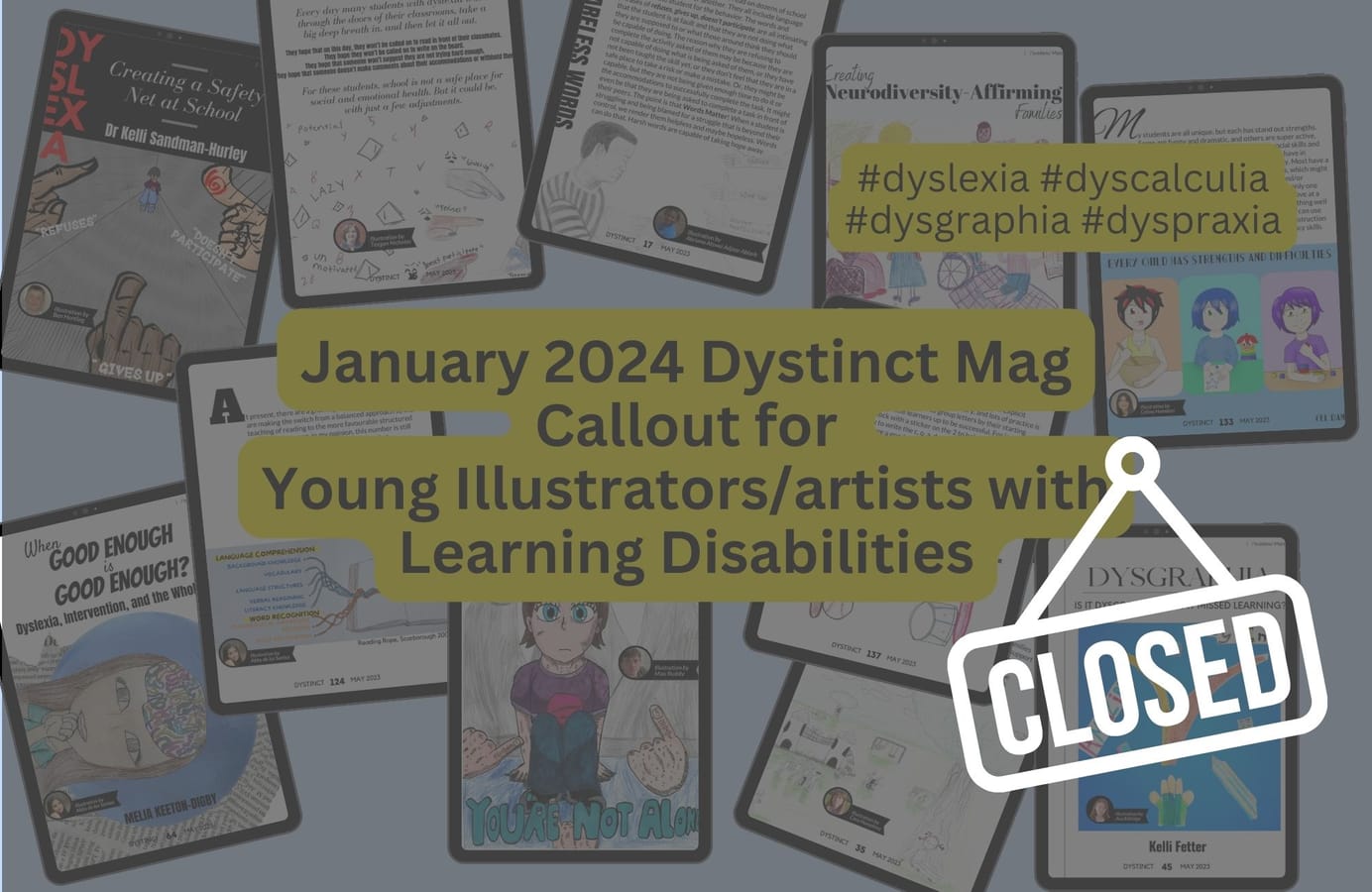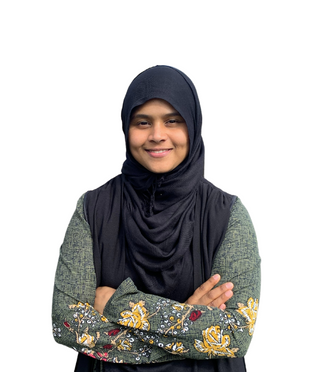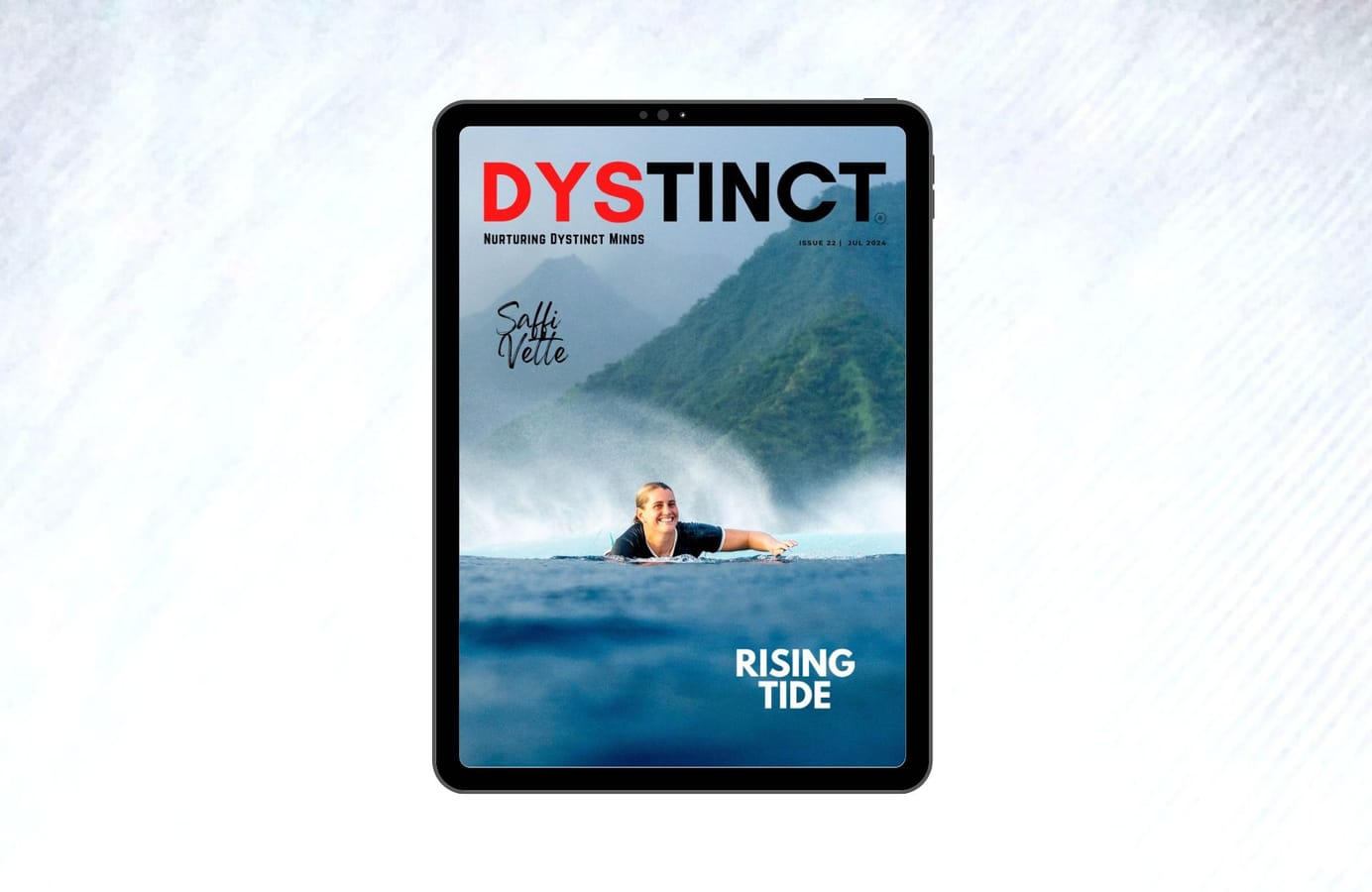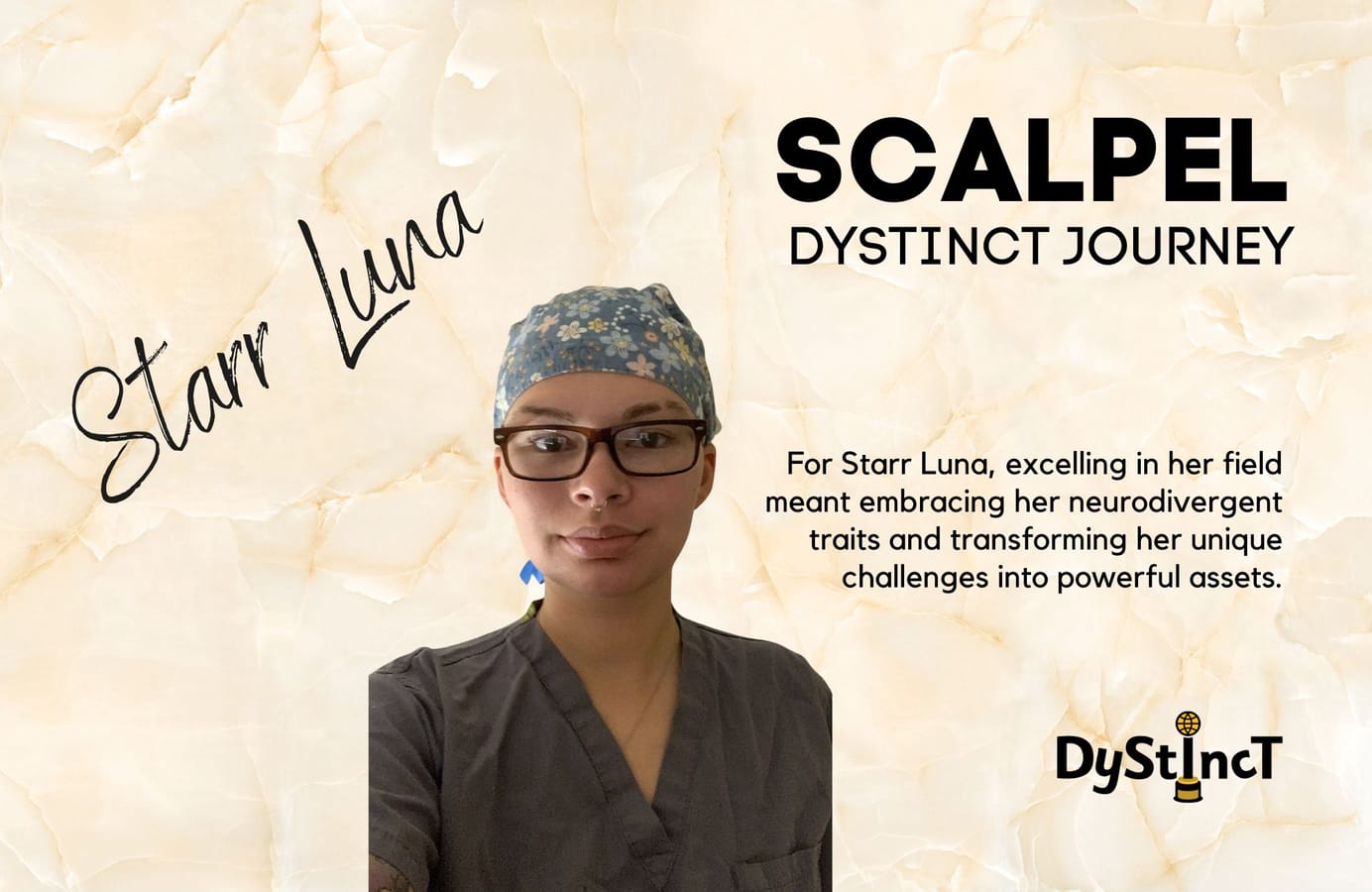
Issue 19: Illustration Callout for January 2024 Dystinct Magazine
Opportunity for children to get their illustrations published in the Dystinct Magazine. In every magazine issue, articles written by specialists are accompanied by illustrations created by children. Submit your child's illustrations for a chance to be featured in the Dystinct Magazine.
Table of Contents
Callouts for illustrations to be featured in the upcoming January 2024 issue of the Dystinct Magazine
Instructions to submit the illustrations are at the bottom. If you have any questions, please get in touch with me at hello@dystinct.org.
Callout 1 - Teacher seeking knowledge about the workings of the human brain
- Article Topic: Terminology in the education landscape: Some key terms explained.
- Article Context: This article, authored by Pamela Snow, Tanya Serry, Nathaniel Swain, Tessa Weadman, and Eamon Charles, academic staff at the La Trobe University's Science of Language and Reading (SOLAR) Lab, explores some key terminology in education. It offers detailed explanations and insights into various educational terms, highlighting the importance of evidence-based approaches and advocating for a critical evaluation of educational practices and trends.
Illustration Guideline:
Children can feel free to create an illustration as per their creativity.
If you require ideas children can create an illustration to the theme of one of the options below:
- Draw a teacher with a magnifying glass searching for information from books spread out in front of her.
- Draw a teacher with books, websites, and brain icons around the teacher to represent the search for knowledge about how the brain learns.
Callout 2 - Teacher led explicit instruction is essential before students can explore these ideas independently
- Article Topic: Terminology in the education landscape: Some key terms explained.
- Article Context: This article, authored by Pamela Snow, Tanya Serry, Nathaniel Swain, Tessa Weadman, and Eamon Charles, academic staff at the La Trobe University's Science of Language and Reading (SOLAR) Lab, explores some key terminology in education. It offers detailed explanations and insights into various educational terms, highlighting the importance of evidence-based approaches and advocating for a critical evaluation of educational practices and trends.
Illustration Guideline:
Children can feel free to create an illustration as per their creativity.
If you require ideas children can draw:
- a teacher turning a large gear (cog) with a handle, which is connected to and in turn rotates smaller gears with students sitting on top of each of the smaller cogs. This shows that when the teacher provides guidance, students can learn effectively, just like how turning the handle makes everything move.
Callout 3 - The I do, We do, and You do technique being used in conjunction with an understanding of the student’s Zone of Proximal Development to guide students from what they initially struggle with to achieving mastery
- Article Topic: Terminology in the education landscape: Some key terms explained.
- Article Context: This article, authored by Pamela Snow, Tanya Serry, Nathaniel Swain, Tessa Weadman, and Eamon Charles, academic staff at the La Trobe University's Science of Language and Reading (SOLAR) Lab, explores some key terminology in education. It offers detailed explanations and insights into various educational terms, highlighting the importance of evidence-based approaches and advocating for a critical evaluation of educational practices and trends.
Illustration Guideline:
Children can feel free to create an illustration as per their creativity.
If you require ideas children can create an illustration to the theme of one of the options below:
- Draw a swimming pool and divide the water in the pool into three zones:
- The first zone is marked ‘Can Do Now’. It shows a child standing in the pool playing with a rubber duck or wearing a floatation ring. There is a bubble above the child’s head that says, ‘I Do’.
- The second zone is marked ‘Can Do With Help.’ It shows a teacher holding the child as he/she attempts to swim. There is a bubble above the teacher’s head that says, ‘We Do.’
- The third zone is marked ‘Can’t Do Now.’ It shows a teacher standing by themselves facing zones 1 and 2 and saying, ‘You Do (later).’
- Draw three columns featuring the same tree with branches:
- The first section is labelled ‘Can Do Now.’ It shows a child on the ground looking at the tree, unsure of how to climb it. There is a bubble above the child's head that says, "I Do."
- The second section is labelled ‘Can Do With Help.’ It depicts a teacher assisting the child as they attempt to climb the tree. There is a thought bubble above the teacher's head that says, ‘We Do.’
- The third section is labelled ‘Can't Do Now.’ It shows an adult sitting on the tree branch and the child looking up at the tree, indicating that they are not yet ready to climb on their own. The teacher is standing next to the child, pointing up and saying, ‘You Do (later).’
Callout 4 - Classroom
- Article Topic: Terminology in the education landscape: Some key terms explained.
- Article Context: This article, authored by Pamela Snow, Tanya Serry, Nathaniel Swain, Tessa Weadman, and Eamon Charles, academic staff at the La Trobe University's Science of Language and Reading (SOLAR) Lab, explores some key terminology in education. It offers detailed explanations and insights into various educational terms, highlighting the importance of evidence-based approaches and advocating for a critical evaluation of educational practices and trends.
Illustration Guideline:
We require a drawing of a teacher standing next to a white board with a large empty speech bubble on top drawn against a plain background.
Callout 5 - Positive relationships between students and teacher
- Article Topic: Terminology in the education landscape: Some key terms explained.
- Article Context: This article, authored by Pamela Snow, Tanya Serry, Nathaniel Swain, Tessa Weadman, and Eamon Charles, academic staff at the La Trobe University's Science of Language and Reading (SOLAR) Lab, explores some key terminology in education. It offers detailed explanations and insights into various educational terms, highlighting the importance of evidence-based approaches and advocating for a critical evaluation of educational practices and trends.
Illustration Guideline:
Children can feel free to create an illustration as per their creativity.
If you require ideas children can draw:
- a teacher teaching her students. Draw a heart that overlaps the teacher and all the students, symbolizing the strong and caring teacher-student relationship.
Callout 6 - Teacher’s Assistant working in a classroom setting
- Article Topic: Working with Teaching Assistants to Support Children with Special Educational Needs
- Article Context: The article emphasizes the importance of training and collaboration between teachers and Teaching Assistants (TAs) to support children with Special Educational Needs and Disabilities (SEND) effectively, promoting their inclusion and learning success.
Illustration Guideline:
Children can feel free to create an illustration as per their creativity.
If you require a guideline, you can can draw:
- a classroom scene with a teacher at the front, teaching a class full of students and draw a Teacher Assistant seated next to one student, providing assistance.
INSTRUCTIONS
Instructions for creating illustrations:
- If your child can create digital drawings, that would be preferred. If not, illustrations on paper will suffice. (If your child can create a digital illustration please let me know about the software/platform that they will be using to create the file).
- Please create/draw/colour on an A4 sheet of WHITE paper.
- Scan the image and send us a clear image of the illustration without shadows. Please do not take a photograph using flash on your mobile device.
Instructions for submitting your illustrations:
Please email me your submissions to hello@dystinct.org with the following info:
- Short bio- 25-50 words
- Name of Child
- Age
- Location (City/Country)
- Diagnosis/suspected diagnosis
- 1-2 high-resolution headshots/ photos of the child
Illustrations featured in previous issue of Dystinct Magazine
The below illustrations were featured in November 2023 Issue of Dystinct Mag





